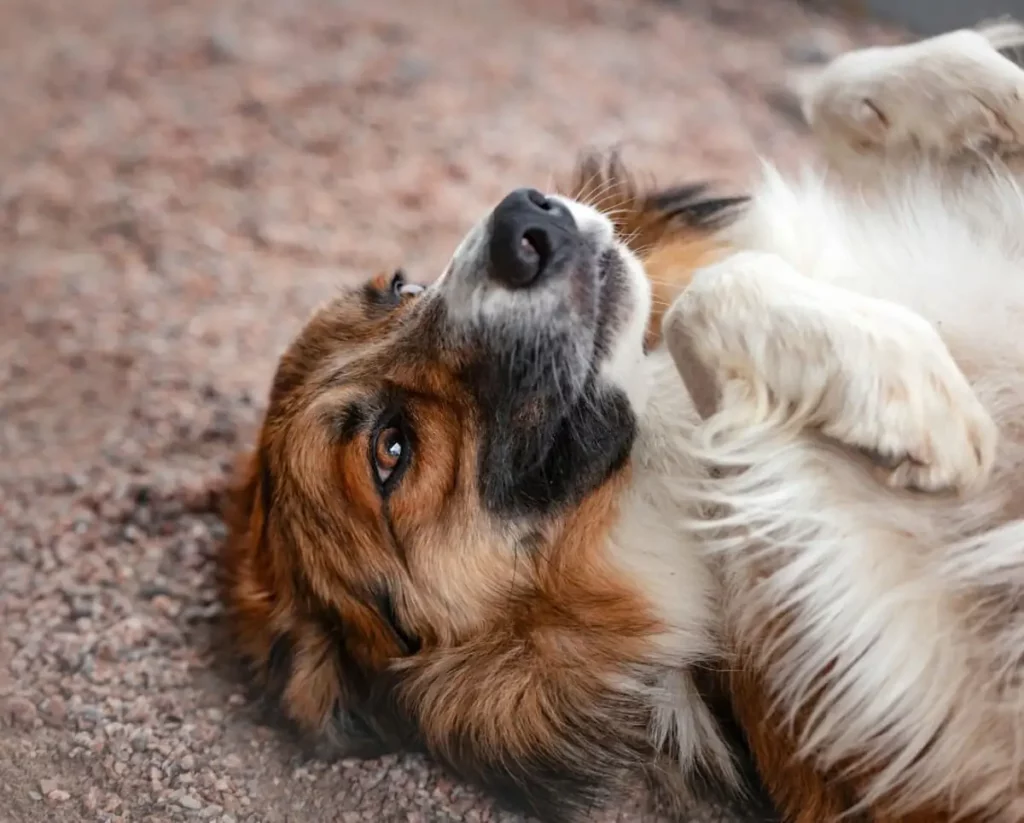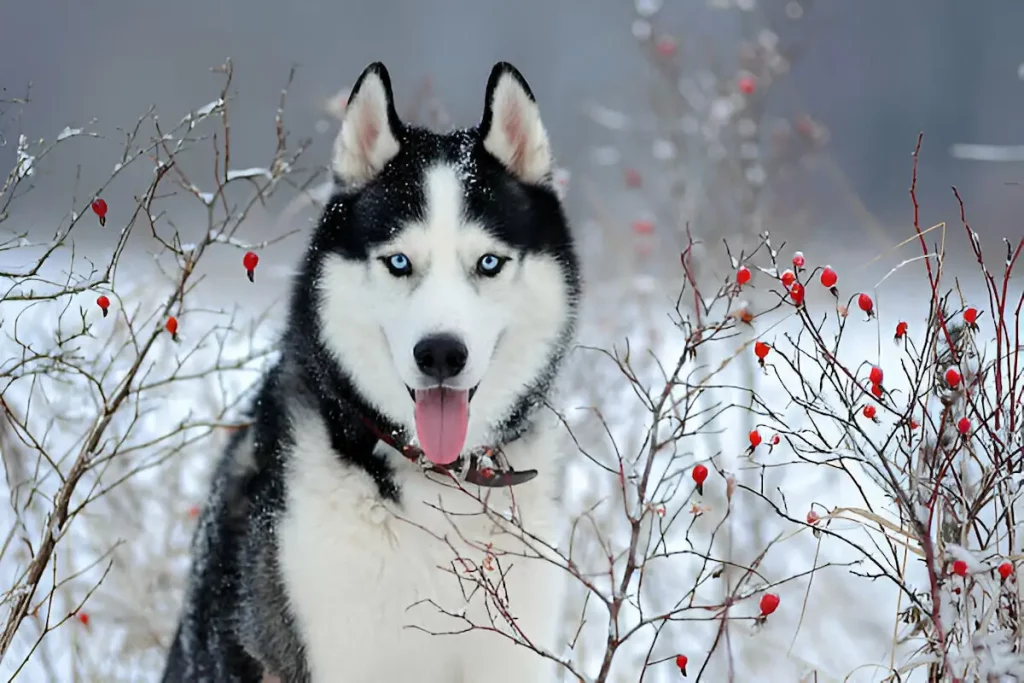Did you just see your dog’s eyes roll back in his head? Maybe it’s the first time you’ve seen something like this and it worries you so much that you already attribute it to any disease you can think of.
Take it easy. While the fact that a dog’s eyes have seemingly rolled back can indicate many things, some of which could be cause for concern, it stands to reason that it could be a harmless occurrence that should never deprive you of sleep.
Why have my dog’s eyes rolled back? Neurological disorders are one of the factors responsible for your dogs eyes rolling back. If this is the cause, it happens suddenly and for a short time, but it can also be persistent. Other reasons include eye injuries, cherry eyes, seizures, and pain, among others.
Why Did My Dog’s Eyes Roll Back? (Understanding the Nictating Membrane)
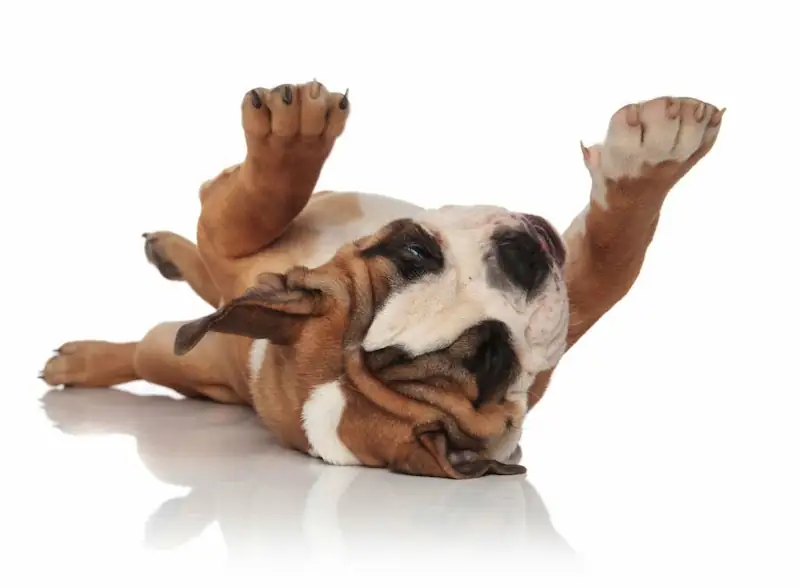
At first, it may be surprising that what you see is not your dog’s globe rollback. In most cases, it is simply your dog’s nictitating membrane, also called the “Hau” or “third eyelid.” The third eyelid is usually invisible to the eye because it is hidden in the corner of a dog’s eye.
Although this should remain like this, it may happen that it protrudes from its usual position, thus covering the cornea. For this reason, as a dog owner, when you first see him, you may think that your dog’s eyes are rolled up into his head, which is not always the case. Often it is just the nictitating membrane that sits above the cornea.
Third eyelids often have different colors, some of which may be clear or cloudy; the color largely depends on the type of breed.
Related: TEACUP MINIATURE SAMOYED: EVERYTHING YOU NEED TO KNOW
Now, what is the function of the nictating membrane?
First, it serves as a protective shield that protects the cornea from injury and also has some cleaning functions; as it glides over the cornea, it removes mucus, debris and dirt that has accumulated over time.
Additionally, the third eye has a lacrimal gland, which is responsible for producing one-third of a dog’s tears. Additionally, its lymphatic system produces immunoglobulin, which helps fight any infection the eye is susceptible to.
The third eyelid performs all its functions from the corner of the eye and therefore you can only see it when your dog wakes up from a nap or when you expose him manually; to do this, you need to lift your dog’s normal eyelid when he sleeps. In this case, you will see the nictitating membrane that sits over the cornea. This leads many to believe that a dog’s eyes roll back in his head while he sleeps.
Aside from the above, if your dog’s nictitating membrane appears when he is fully awake, active, and even visible for a long period of time, it may suggest that your dog is in potential danger and needs quick medical attention.
Related: Why Does My Dog Get Hiccups At Night
Reasons for Revealing the Third Eyelid
However, there can be many things about the nictitating membrane that can cause it to protrude from the orbital corner and overlap the eye. However, more often the cause is some neurological disorders and some eye injuries. So, if you notice your dogs eyes rolling back and twitching, the following could be responsible:
1. Neurological Disorders
Some neurological disorders may be responsible for the appearance of the Third Eye in dogs, in some cases perhaps only for a short time, but continuously. A neurological disorder can cause the nerves responsible for maintaining the nictitating membrane at the Orbit to be less functional. As a result, the third eyelid can no longer be held in its position in the corner of the eyeball, protrudes and then overlaps the eyeball for some time.
A very common neurological disease responsible for this is Horner’s syndrome [1]. A dog does not necessarily have to have lived with this disorder before, as it usually occurs suddenly. If this is the case, in addition to the appearance of the third eyelid, you will notice the following symptoms:
- Sunken eyes
- Droopy facial features
- Small pupil size
- Droopy eyelids
In most cases, the cause of Horner’s disorder in a dog cannot be determined categorically, but it is often associated with trauma to the head and overgrowth that presses on the nerves. It can also be triggered by middle or inner ear disease, a bite wound, or a herniated disc.
However, this disorder is typically attributed to breeds such as Golden Retrievers and Cocker Spaniels, although it can occur in other breeds as well.
Be that as it may, it goes without saying that other neurological diseases can also be responsible for the appearance of the third eyelid. Other common conditions include dysautonomy and tetanus.
2. Eye Injury
Eye damage can also lead to the appearance of the nictitating membrane, which causes a dog’s eyes to swell and roll backwards. As a result, a dog’s eyes may become inflamed and he will suffer great pain.
Scratches and conjunctivitis can be responsible for eye injury. In this case, a dog’s Eye may have been crushed by the paws of another animal or accidentally touched an object in the house.
For this reason, a dog’s hawthorn sticks out for a while, covering the eyes to prevent further damage. It is rather the protective mechanism of the eye. Like a neurological disease, an eye injury can also affect the nerves of the horny deer and lead to an uninhibited prolapse.
3. Cherry Eye
A condition called cherry eye can also cause the appearance of hawkeye. As a result, a dog’s third eyelid looks like a red fleshy mass that resembles a cherry. However, it is more common in puppies or in general in dogs under the age of two. It also occurs in cats of this age group.
Adult dogs can also develop cherry eye, but some breeds are more vulnerable, such as Beagles, Cocker Spaniels and Bulldogs.
Related: Why Does My Dog Itch At Night (Reasons and How To Stop It)
Other Possible Causes of A Dogs Eyes Rolling Back (other than the nictitating membrane)
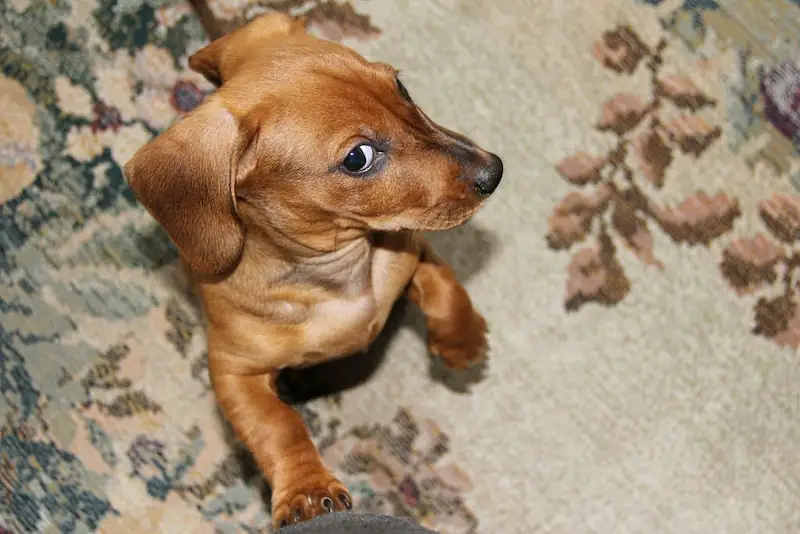
While the appearance of the nictitating membrane is often confused with a dog’s staring and rolling eyes, sometimes it can actually be that a dog has his eyes rolling back into his head. Let’s look at other possible reasons below:
4. Nystagmus
Nystagmus is a very likely cause of a dog rolling his eyes. This condition is characterized by involuntary eye movements; more often the eyes quickly slant to the side. Although it is rare, some dogs may experience this condition as they grow, but it is typically passed on from birth.
In addition to involuntary eye movements, clumsiness and lack of coordination are other symptoms you will notice if your dog is living with this condition. You will also notice that your dog walks in circles and slowly tilts his head.
Once you notice this, it’s important to take your dog to the vet immediately. A series of tests are performed in a veterinarian’s laboratory and then medications are given to relieve the condition. However, Age is a deciding factor in how quickly a dog can recover.
5. Medication
If a dog is taking medications, these could be the reason why the dogs eyes roll back and squint. Opioid painkillers and sedatives may be responsible. In this case, if a dog’s eyes roll back, it often just means that the dog is well relaxed from the medications administered, so it should not be a cause for concern.
You need to be aware of the potential side effects of medications given to your dog, and a veterinarian should address these as you discuss how to use the medications. In any case, make sure you give your dog the correct dosage prescribed by your vet.
6. Seizure
A seizure can also be the reason a dog rolls its eyes. Seizures in dogs are dynamic and can come in various forms; This makes it difficult to tell if your dog is having a seizure or what is causing the seizure. However, one of the most noticeable symptoms of an attack in a dog is the turning of the eyes into the head.
If this is the case, you will also notice that your dog drools excessively. Your dog may also become inactive and unresponsive, even if he is wide awake with his eyes open. Although it can happen continuously, the seizure usually lasts a few minutes as the eyes roll back. Certain abnormalities usually cause a seizure in a dog’s brain.
A veterinarian will need to thoroughly examine your dog and then administer medications to prevent future attacks and provide relief to your dog.
7. Pain
Pain in one part of your dog’s body can also cause his eyes to roll back. It can be pain due to an injury suffered or pain in your internal organs. In any case, it is difficult to determine where exactly the pain is coming from. If you notice any of the following symptoms after eye rolling, you should see a veterinarian with your dog.
- Restlessness at rest hours
- Loss of appetite
- Whining accompanied with continual barking
- Pacing back and forth
- Weight loss in a short period of time
- Excessive drooling
All this and rolled back eyes suggest that your dog may be suffering from pain. Again, it is important to take him to a vet because he needs to be assessed where the pain is coming from and the pain needs to be treated. Without this, the pain may go away on its own.
Questions That Will Help Lead to the Root Cause
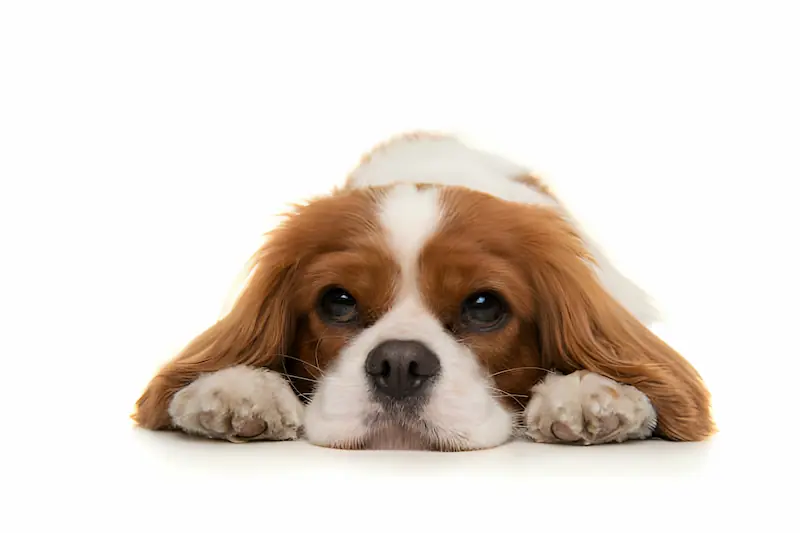
If you take your dog to the vet, the following questions will help you find the cause and find a solution more easily if you answer them correctly:
Does your dog have trouble keeping his eyes open?
This indicates an eye injury.
Has your dog accidentally hit his head on something? Or go through a Trauma?
You may need to place an ice block on your head and the area near your eye to relieve it.
Aside from the visible nictitating membrane, do the eyes look as normal as they should?
If both of your dog’s eyes do not react to light at the same time, this could indicate a head injury.
Don’t see your dog’s eyelids until a few minutes after waking up?
This may indicate that there is no real problem. The nictitating membrane simply performs its cleaning function when the dog takes a nap and the nictitating membrane does not immediately return to the corner of the eye.
Final Thoughts
While turning a dogs eyes is often just the appearance of the third eyelid, health problems that can be fatal to a dog’s health cannot be ruled out. If you notice your dog’s eyes rolling back, check to see if there is a medical connection or if he has suffered an eye injury. In this case, it is recommended to take him to the vet immediately.
Otherwise, if the third eyelid is visible only for a short time, you should not worry, but carefully watch how things develop.

